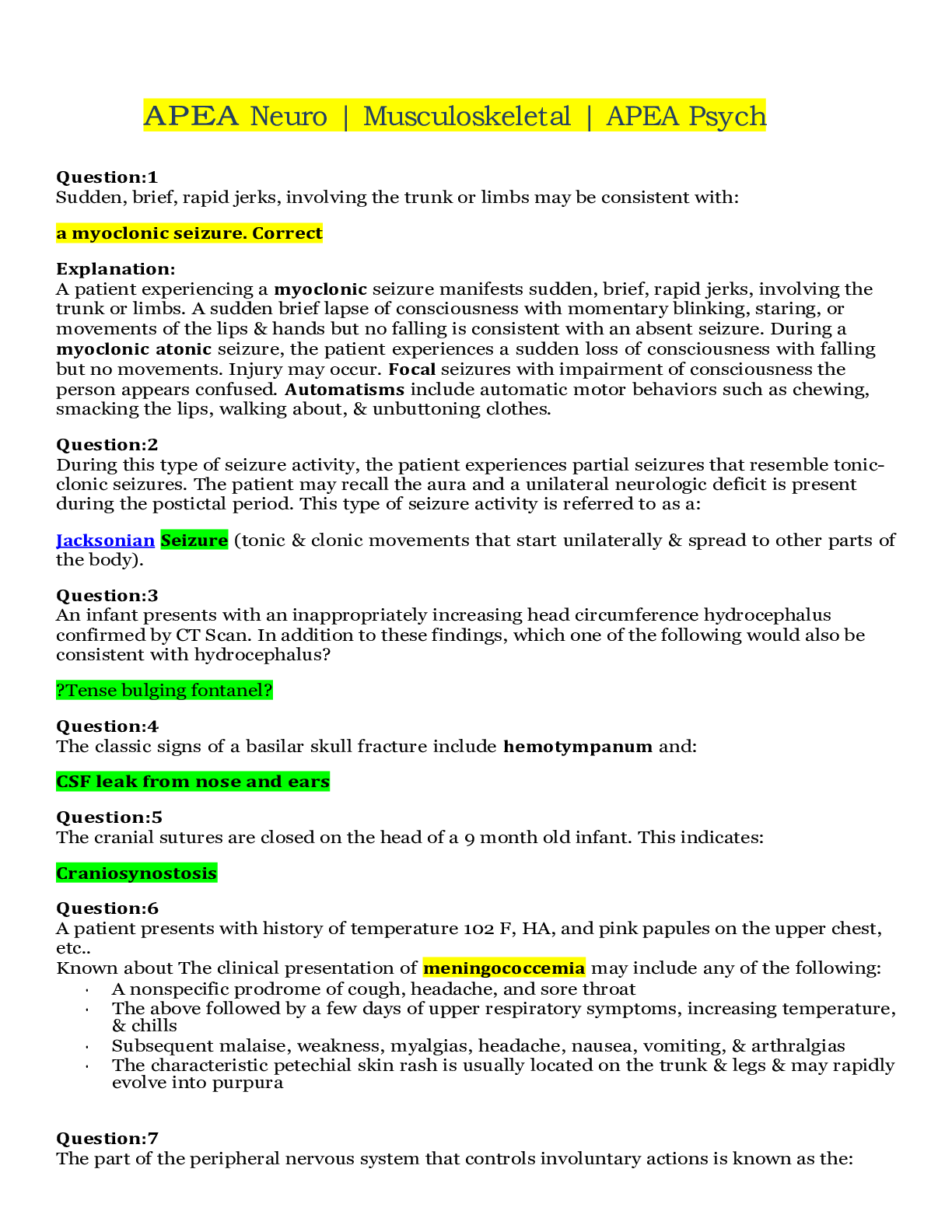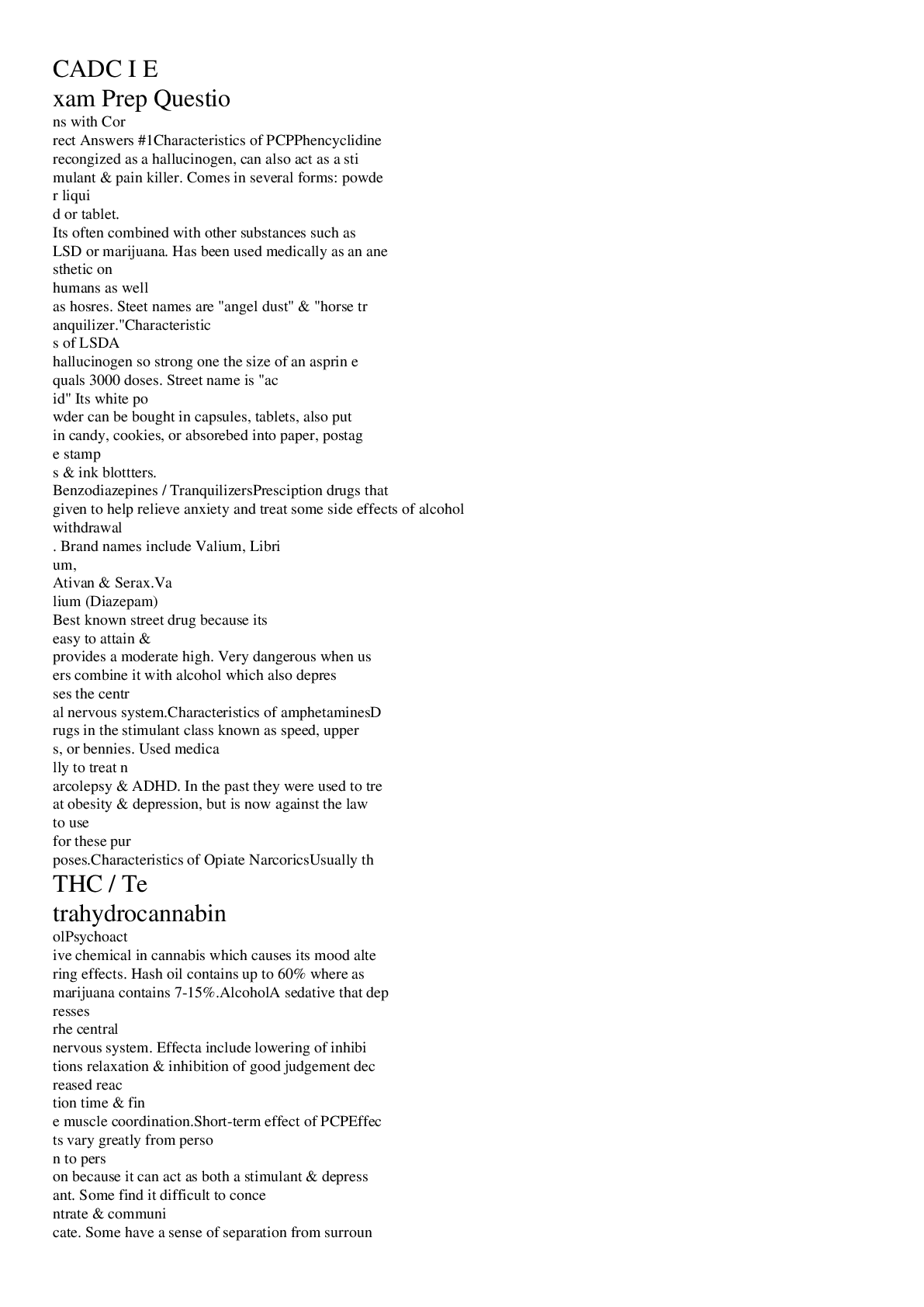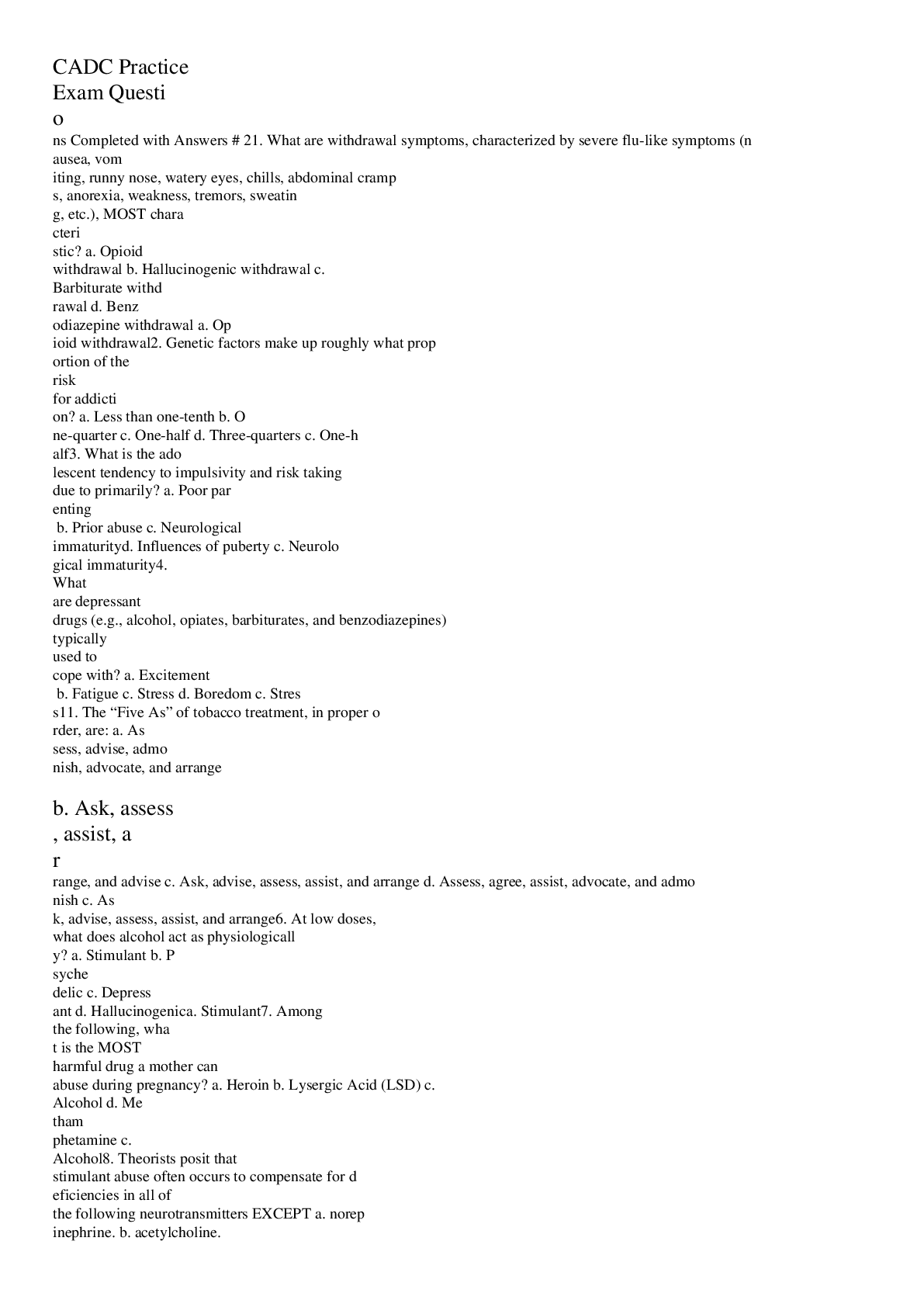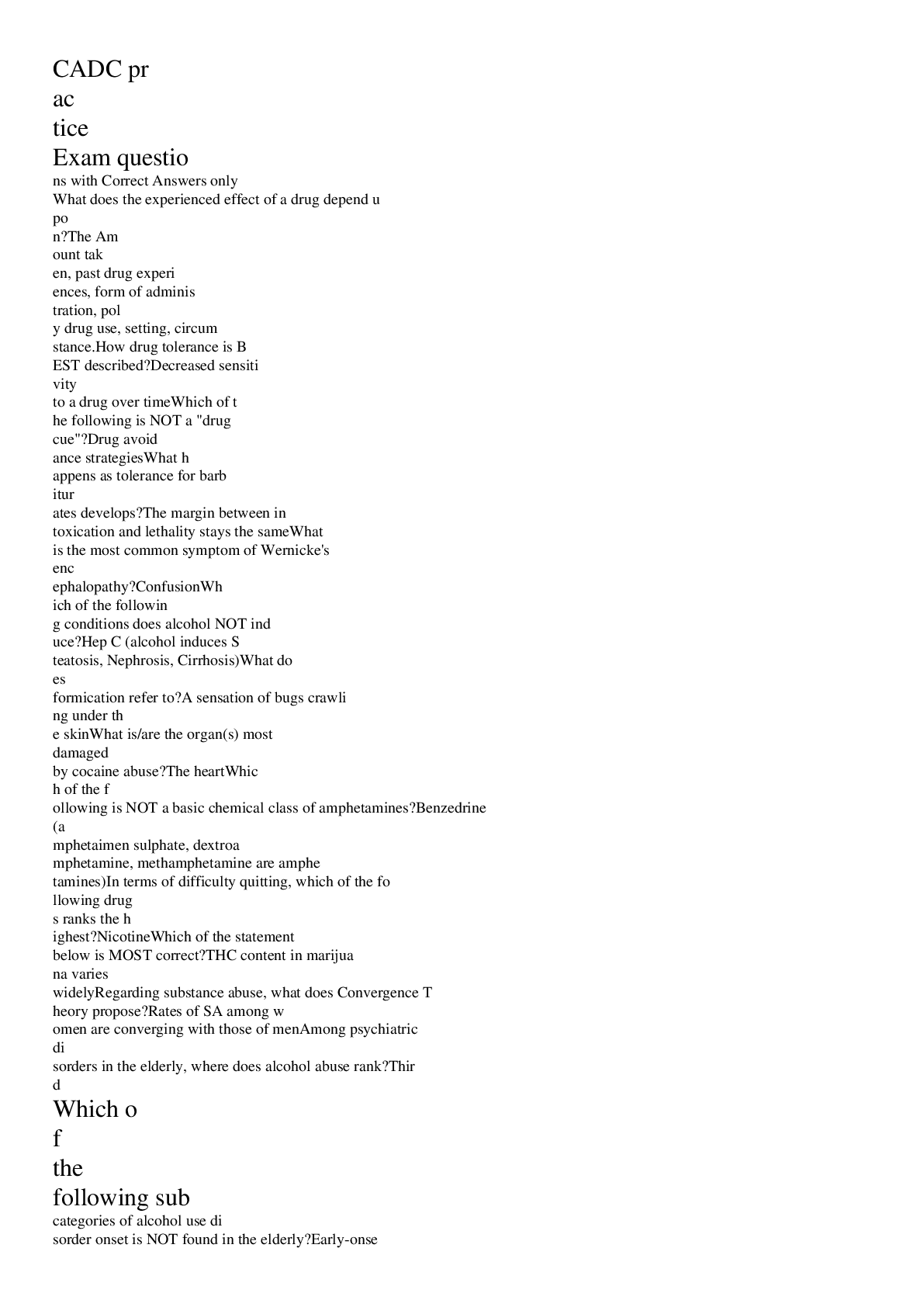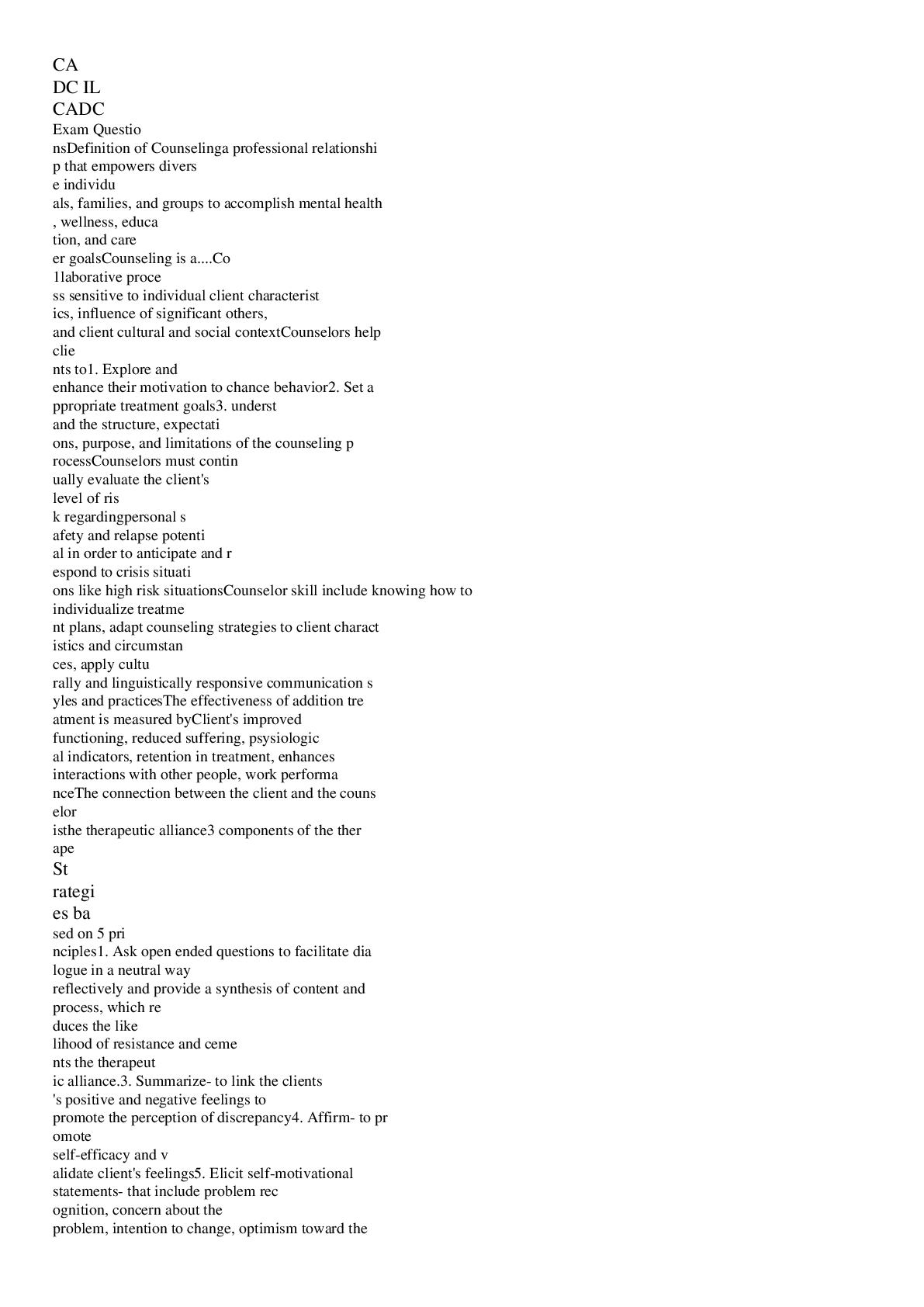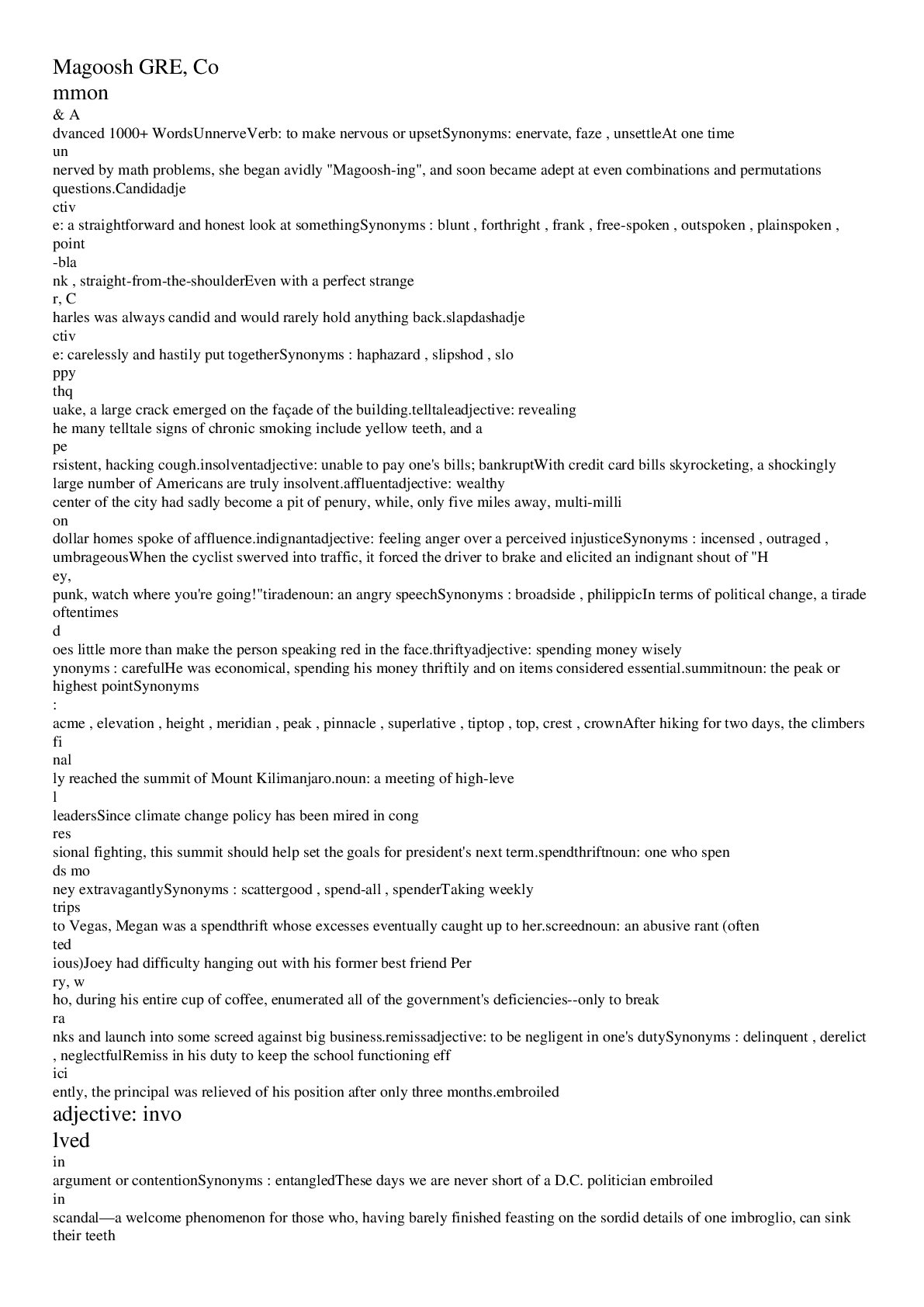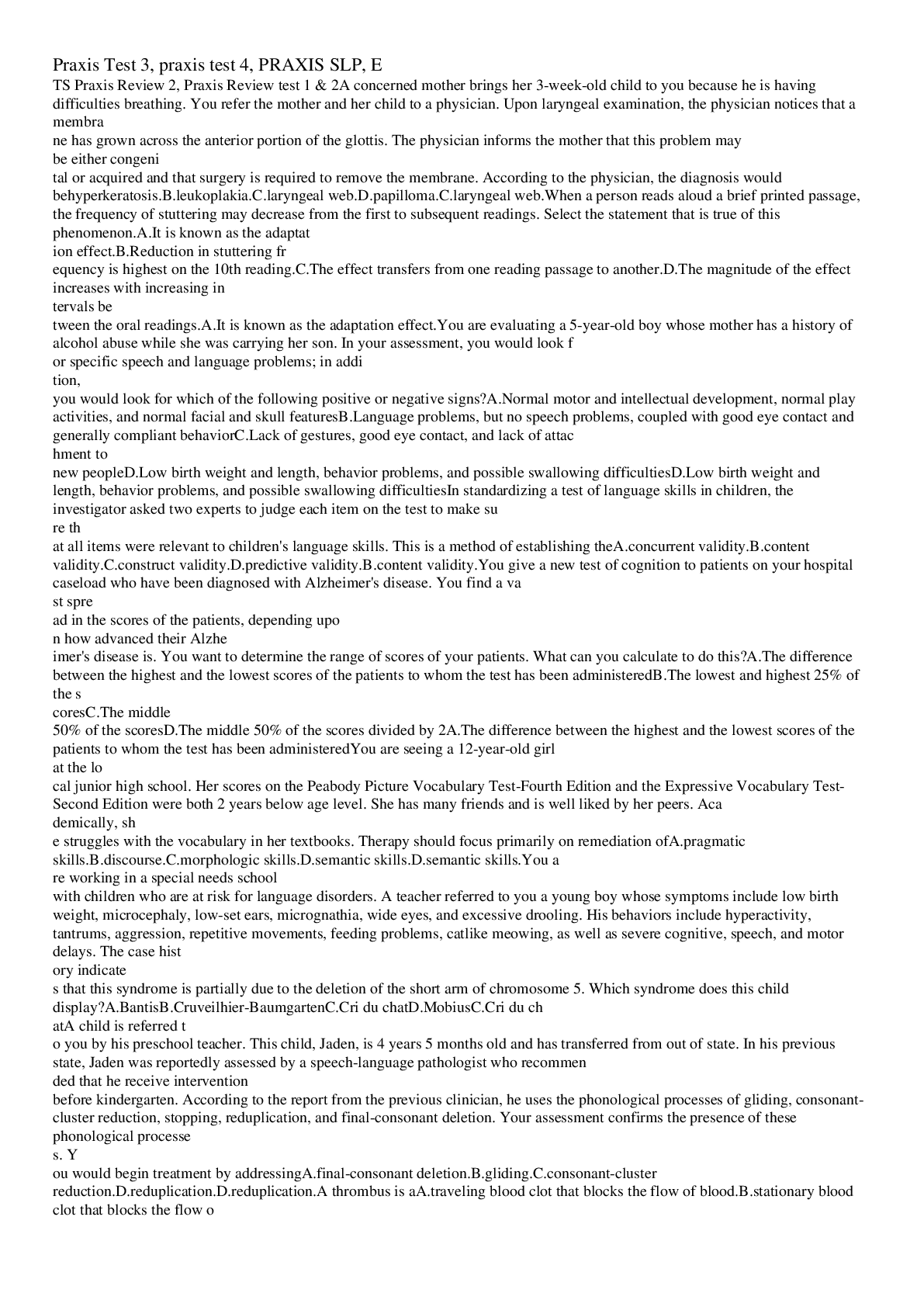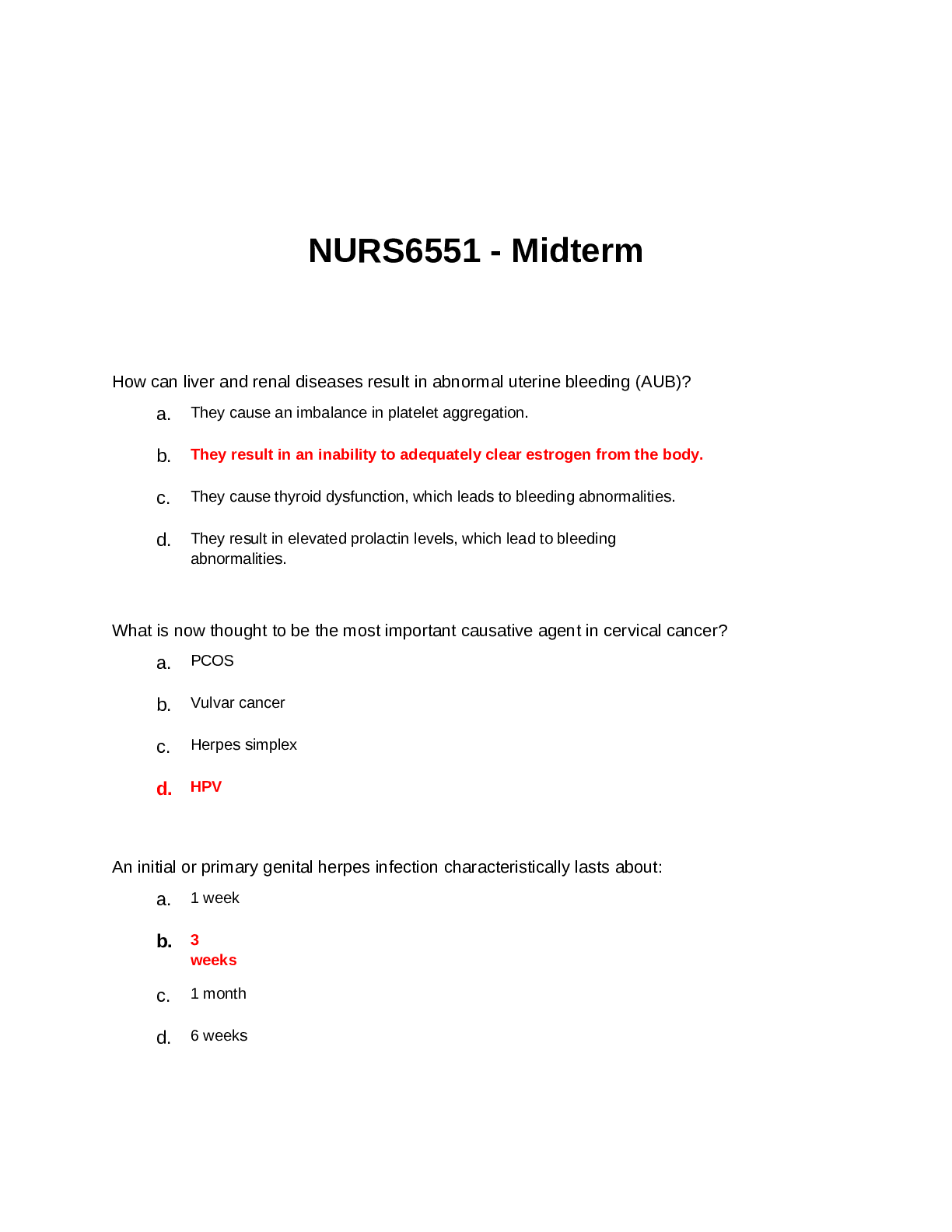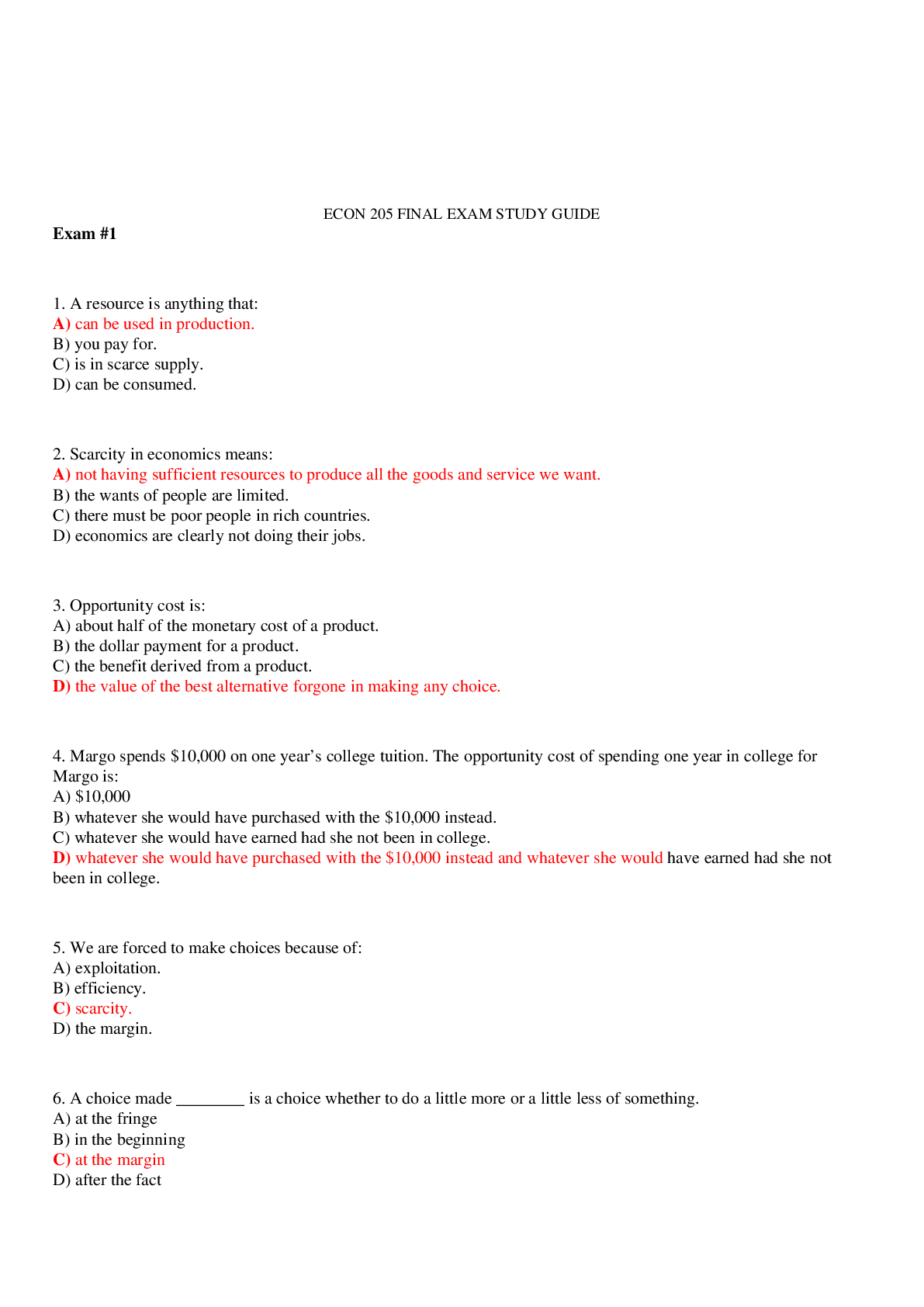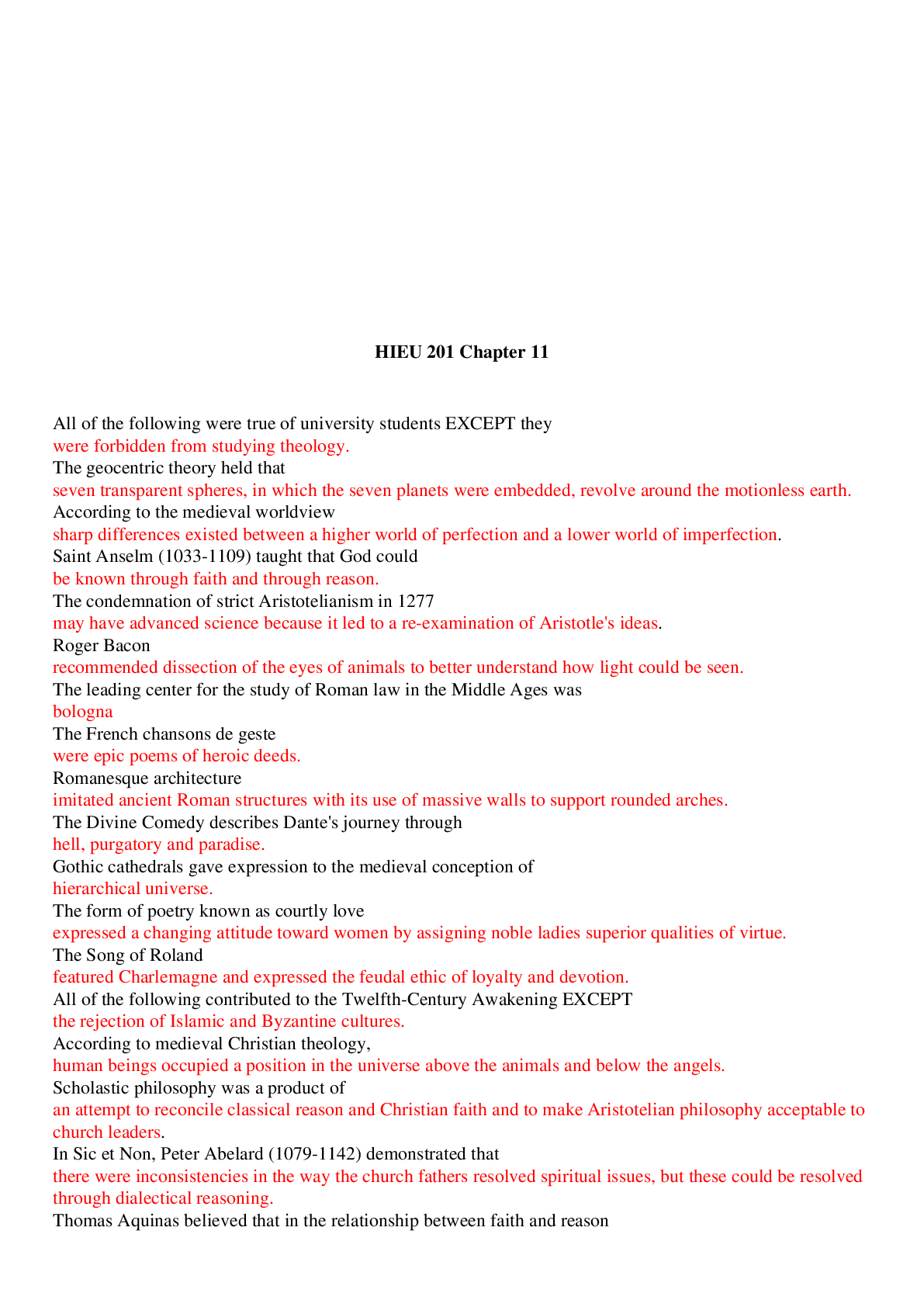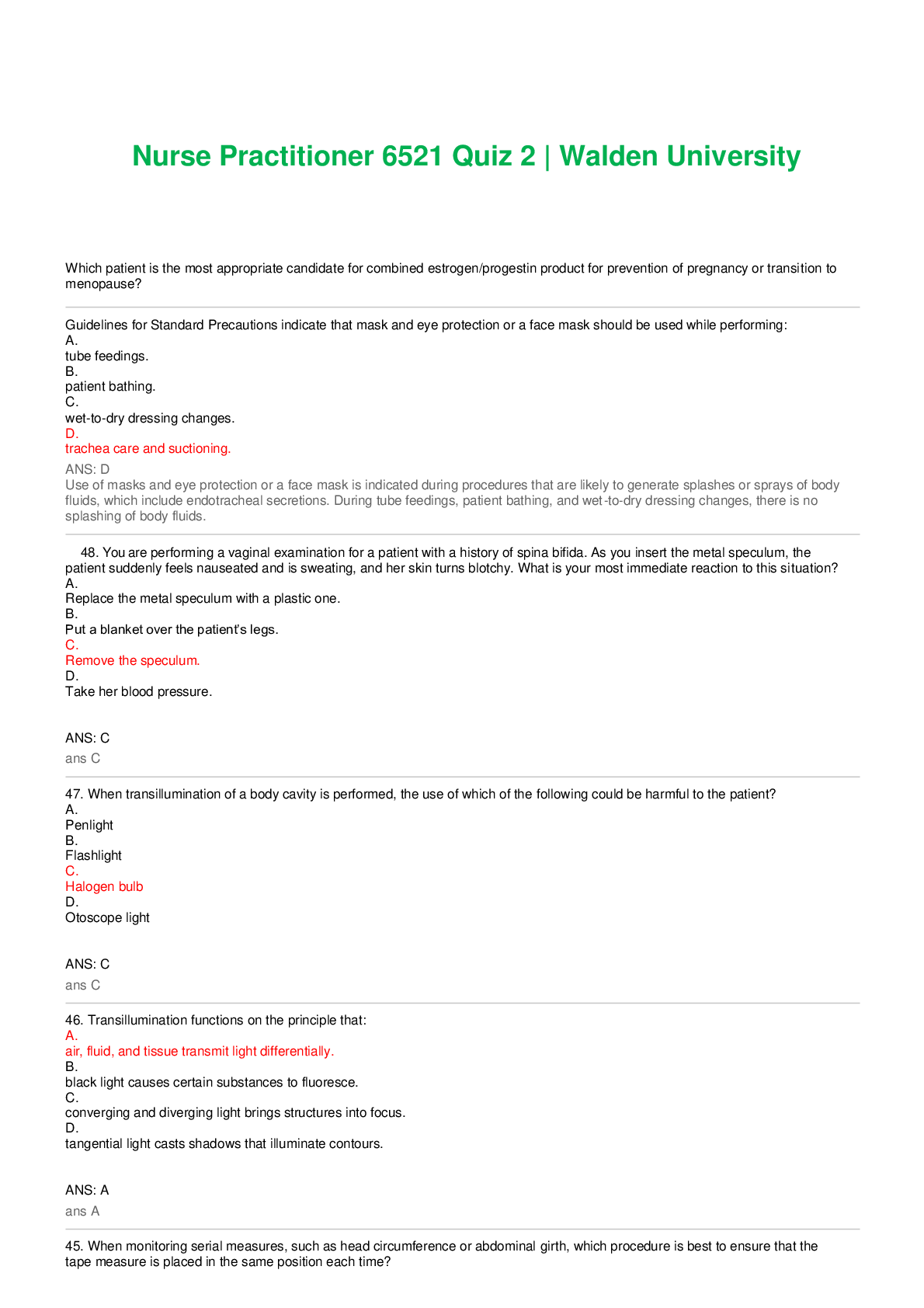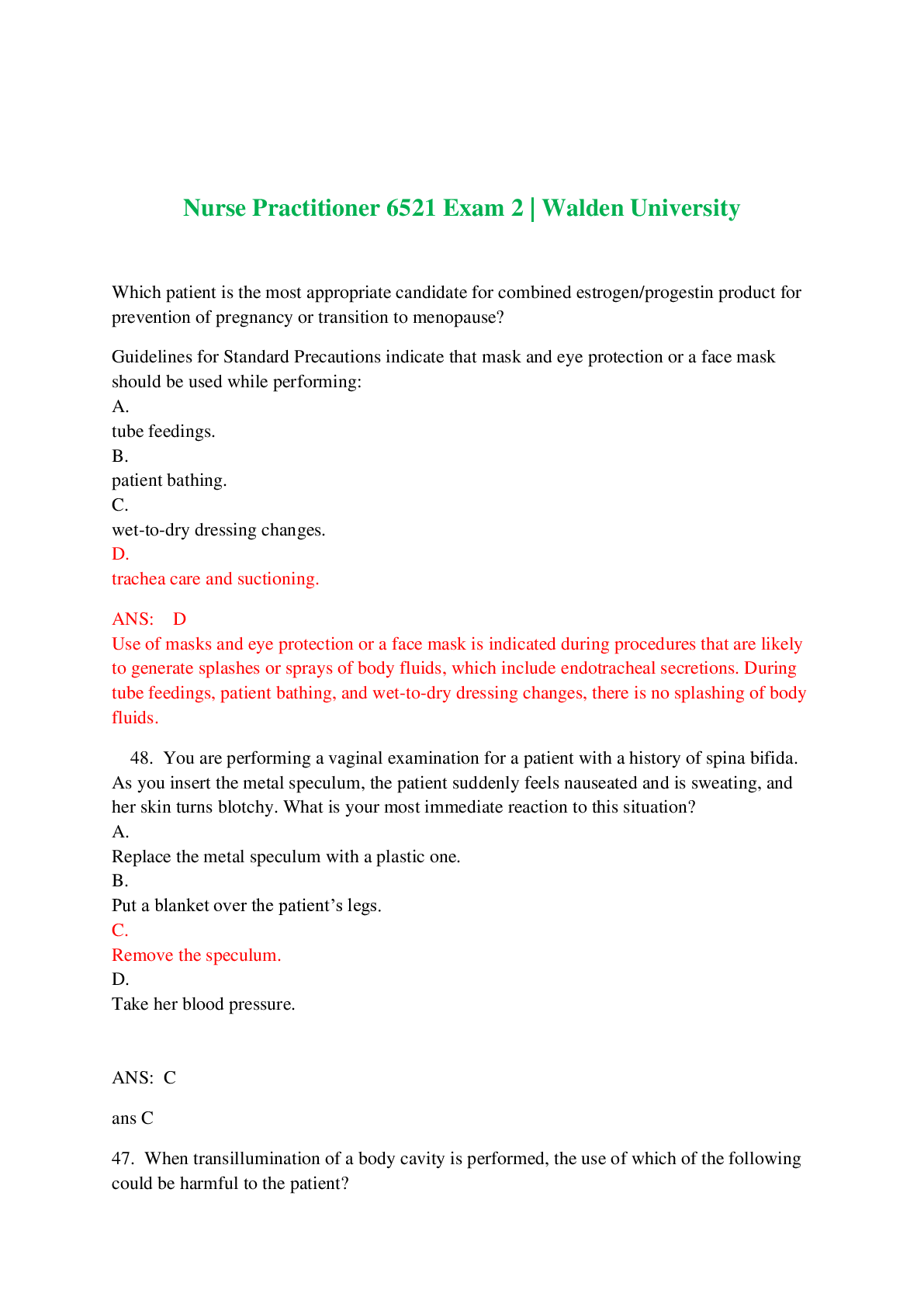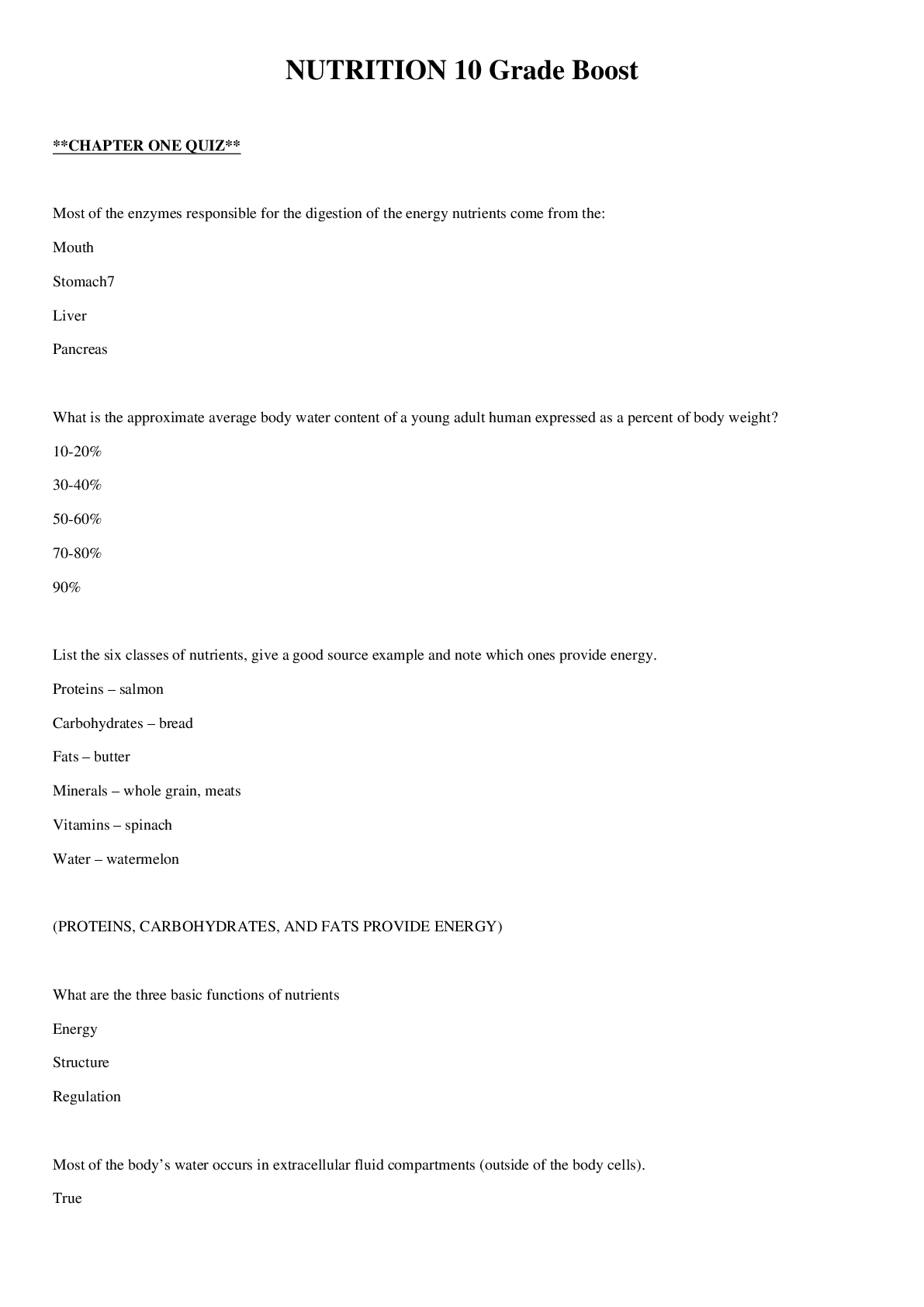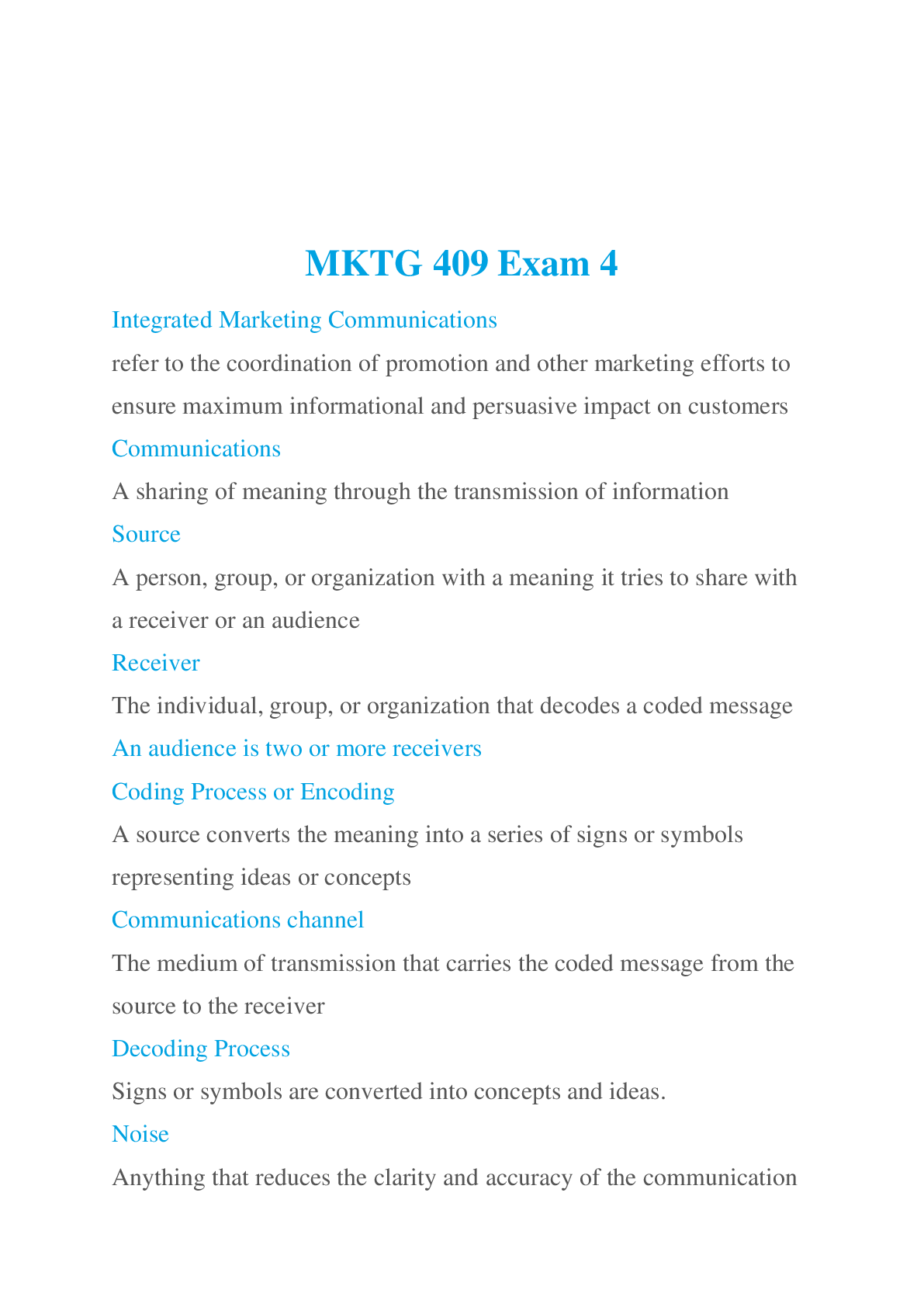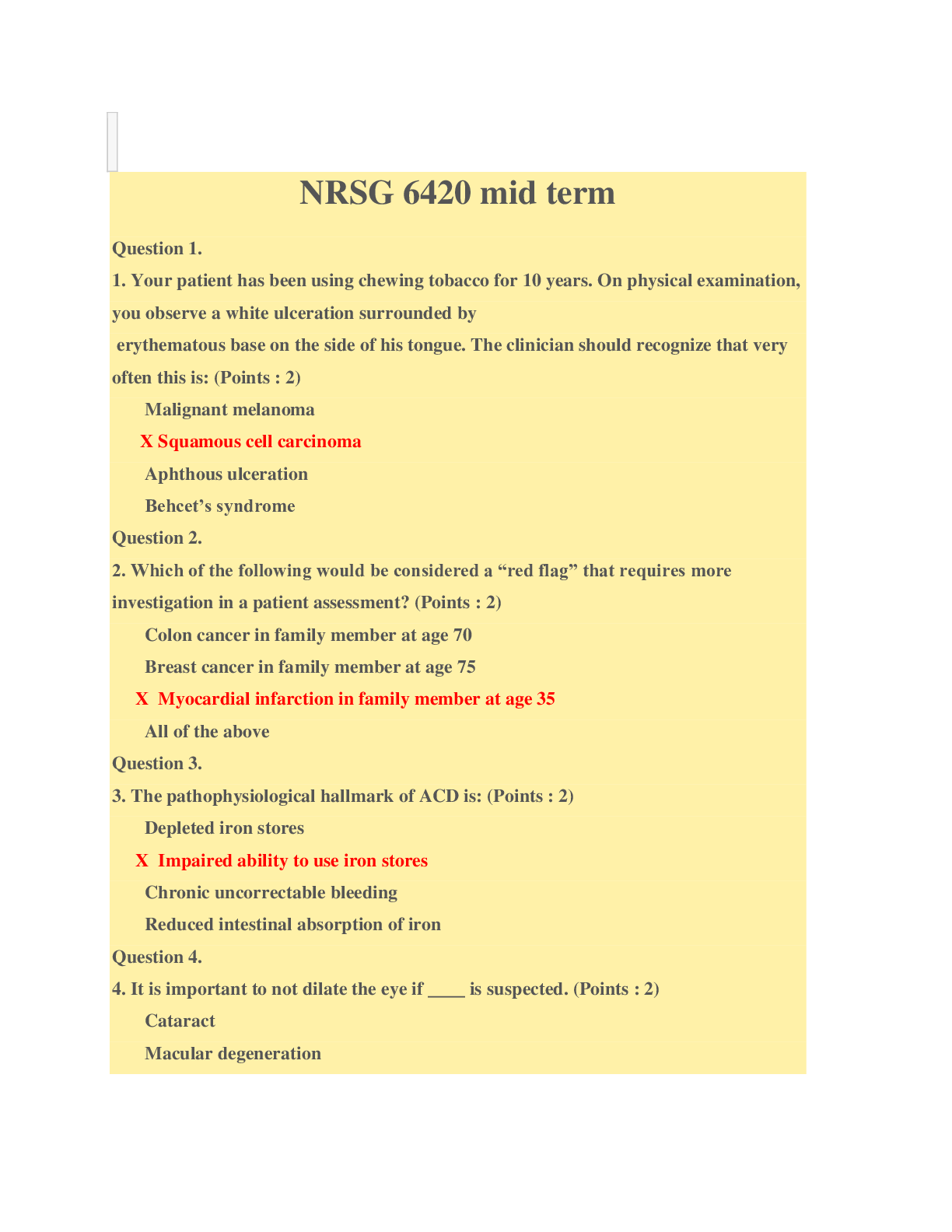Anthropology > EXAM > ANTH 170C1Anthropology Exam 1 (All)
ANTH 170C1Anthropology Exam 1
Document Content and Description Below
Anthropology Exam 1 Questions: Know the three secrets of archaeology (lecture 1) • 1. Archaeologists study people • 2. Archaeologists learn very little from individual artifacts • 3. To do ... archaeology well, you must observe how people interact with the material world today Know the differences between processual and post processual archaeology. • Processual: environmental: what we eat/how we get food • Postprocessual: power/gender/ideology Know the stages of archaeological research. • 1. Reconnaissance/survey: (search an area for archeological sites, can be unsystematic or systematic, identify sites for excavation, develop regional understandings, extensive strategy: learn a little bit about a lot of sites) • 2. Excavation: (carefully digging up arch. sites, record exact location of artifacts, develop chronology of site use, intensive strategy: learn about a few sites, learn how to dig in a field school) • 3. Analysis/lab work: (Make sense of artifacts collected previously, rely on specialists (plants, animals, dating), this is the longest portion of research AND THE MOST IMPORTANT- 1 hour in field= 3 hours in lab processing material. • 4. Interpretation • 5. Repeat Know the strength and weaknesses of archaeological survey and excavation. • Strengths: gives us evidence, ability to test hypothesis, helps with chronological analysis by helping to identify changes in use over time and distinguishing between different layers of development. • Weaknesses: destructive (can only dig up once), expensive, time consuming. The weaknesses are the strengths. A little info about a lot of stuff Be prepared to identify the species of human ancestors based on a picture of a skull (see below). Know the relationship between tooth size/shape and diet in human ancestors. • Ardipithecus ramidus had thin-enameled teeth. The teeth are unspecialized and suggest that this hominin ate soft fruit and other plant foods. • Robust Australopithecines had large teeth that were specialized for chewing coarse, fibrous plant foods. • Homo habilis had more even and less specialized teeth. The molars were narrower, the premolars smaller, and the incisors larger and more spadelike, as if they were used for slicing. However, microscopic wear studies of the teeth have shown that both Australopithecus and H. habilis were predominantly fruit eaters, so there does not seem to have been a major shift in diet between the two. • A. Robustus and A. Boisei had massive jaws, molar teeth, and cranial anatomy optimized for hard chewing. They may have consumed hard-to-open foods during hungry periods. Bigger the teeth, more plants they ate. https://www.coursehero.com/file/16915404/Anthropology-Exam-1/ This study resource was shared via CourseHero.comKnow the rough dates that each human ancestor existed and where they are found. • australopithecus africanus: 3 mya. • Homo ergaster: 1.9 mya, found in Africa • Homo erectus: 775-1300 CC, found in East Asia, bigger brain • homo sapiens: 170,000 yo, found in Africa • A.Homo sapiens: 800,000 yo. • homo habilis: 2.5 mya, found in Africa Know the difference between unilinear and multilinear evolution. • Unilinear biological evolution: single line of hominins leading to modern humans (us) • Multilinear biological evolution: many different hominins at the same time Know the key elements of human evolution, when they occurred, and how we know they occurred. Know which human ancestors left Africa, and when they left Africa. • Homo Ergaster, they left Africa about 1.7 mya Be prepared to answer question on the role of language in the expansion of Homo sapiens into Europe. Be prepared to answer questions about what upper Paleolithic rock art reveals about the origin of language generally and life in the upper Paleolithic specifically. Be prepared to answer questions on ape intelligence and language ability. Be prepared to discuss the causes and importance of Broad Spectrum Adaptation. • Ice age, big animals died off. People began to eat more of smaller things (animals). Before they ate a lot of a few big animals. Be prepared to discuss why stone tools became smaller at the start of the Holocene. • Stone tools became smaller at the start of the Holocene because there was a shift to hunting smaller animals due to the fact that many big animals became extinct thanks to the climate change. Be prepared to discuss the evidence for greater complexity among hunters and gatherers in the early Holocene Vocab: Archaeology: the study of past human behavior based on surviving material finds. Anthropology: biological and cultural study of all humanity, ancient and modern. The study of mankind in its wildest sense; this also includes biology and culture. Culture: a set of designs for living that help mold human responses to different situations; concept developed by anthropologists to describe the distinctive and adaptive system Cultural System: complex system comprising a set of interacting variables- tools, burial customs, ways of getting food, religion, so on- that function to maintain a community in a state of equilibrium with its environment Cultural Process: refers to the process by which human societies changed in the past Invention: creating a new idea and transforming it onto an artifact or other tangible innovation that has survived. https://www.coursehero.com/file/16915404/Anthropology-Exam-1/ This study resource was shared via CourseHero.comDiffusion: spread of ideas and concepts; label for those processes by which new ideas or cultural traits spread from one person to another or from one group to another, often over long distances. Migration: involves the movement of people and is based on a deliberate decision to enter new areas and leave old ones Coprolite: a piece of fossilized poo Stages of Archaeological Research: Reconnaissance/Survey: searching an area for archaeological sites and studying and develop regional understanding Excavation: carefully digging up archaeological sites, recording keeping Analysis/Lab Work: longest portion of research, make sense of artifacts collected previously Interpretation: who, how, where, when, why Remote sensing: go at dawn or sunset, use airplane and use aerial photography- allows you to see things you wouldn’t see on the ground • Aerial Photography, Crop Marks, Satellite images B.C./A.D.: Before Christ/ After Death BCE/CE: Before Common Era/ Common Era BP: Before Present, generally used for really old stuff MYA: millions of years ago Processual Archaeology: (study the way humans do things and the way things decay) how we eat, hunt, live, basic functions Post-processual Archaeology: (subjectivity on archeological interpretations) greater focus on induvial and group behavior, the cultural biases of archaeologists use in interpreting their data, and on the intangibles of human behavior, such as social organization, religious beliefs, and worldviews. Hominim: modern humans, earlier human subspecies, and other direct ancestors Punctuated equilibrium: Long periods of stability punctuated by periods of rapid change. In comparison to the old theory that thought of evolution as slow and gradual. Bipedalism: walking upright on two feet, stand taller see further, stay cooler Brain Size: as brain size increase the tools produce get better Sexual Dimorphism: size difference resulting from one’s sex Language: key attribute of language is symbolism. Cave paintings are symbolic. Oldowan Tools: (homo habilis) older, uglier, and worse made tools (don’t even look like tools) Acheulian Tools: (homo erectus) ax is way bigger, present in Europe, Africa, and Asia Symbol: something that represents something else by association, resemblance, or convention Larynx: the voice box • Human adults are the only mammals that have low larynxes and arched skulls allowing them to produce a larger range of sound to speak. • Most mammals have a larynx high in the neck and a flat based skull Altamira: cave paintings of bison in Spain Lascaux: 15,000-year-old cave paintings in southern France. Know for the large paintings of bulls https://www.coursehero.com/file/16915404/Anthropology-Exam-1/ This study resource was shared via CourseHero.comChauvet: Paintings in France dating back to 32-30,000 BP. Including many pictures of dangerous animals. Cosquer: Cave paintings in France → Spit paint on hand to leave an outline Niaux: Cave paintings in southern France dating between 13,850-12,890 BP Cognitive fluidity: Agile → can change easily. Allows interaction between the different parts of the human mind. Allowed for natural and social worlds to come together→ human societies were formed and wiped out or mixed with earlier human populations that had not obtained cognitive fluidity. Pleistocene: the last geological epoch, sometimes called the Ice age or Quaternary Holocene: warmer period beginning in 10,000 BCE Carrying Capacity: ability of the environment to support people and animals Seasonal Round: Population Pressure/Density: Additional Book Vocab: Text-aided archaeology: archaeology practiced with the aid of historical documents Prehistoric archaeology: archaeology of ancient societies that were non-literate Uniformitarianism: geological observations presented evidence of gradual change over long periods of time through natural processes such as flooding and erosion Radiocarbon dating: enabled people to date sites in all corners of the world but also to compare the chronologically Unilinear Cultural Evolution: early social scientists believed human societies evolved in a simple, linear fashion, slowly ascending an evolutionary ladder of human progress towards that ultimate pinnacle, industrial civilization. Multilinear cultural evolution: now widely accepted as a very general framework fro studying the cultural evolution of human species -Prestate societies: societies on a scale, based on the community, band, or village -Bands: associations of families of no more than 25 to 100 people. -Tribes: clusters of bands that are linked between clans. -Chiefdoms: still kin-based but more hierarchical, with power concentrated in the hands of kins leaders- have a higher population of 5,000-20,000 -State-organized societies: operate on a large scale with centralized political and social organization, class stratification, and intensive agriculture. Cultural Ecology: the total way in which human populations adapt to and transform their environments, is at the core of multilinear evolutionary theory Evolutionary ecology: based on the proposition that variation in the behavior of individual organisms is shaped by natural selection. Optimal foraging strategy: argues that the most efficient forging strategies adopted by human groups are those that produce the greatest return in energy relative to time and effort expended. Contingency Model: exploitation of the food resource is independent of its abundance Prey Model: assumes that foragers will try and maximize the net rate of energy capture https://www.coursehero.com/file/16915404/Anthropology-Exam-1/ This study resource was shared via CourseHero.com Powered by TCPDF (www.tcpdf.org) [Show More]
Last updated: 2 years ago
Preview 1 out of 4 pages

Buy this document to get the full access instantly
Instant Download Access after purchase
Buy NowInstant download
We Accept:

Reviews( 0 )
$9.50
Can't find what you want? Try our AI powered Search
Document information
Connected school, study & course
About the document
Uploaded On
Mar 13, 2021
Number of pages
4
Written in
Additional information
This document has been written for:
Uploaded
Mar 13, 2021
Downloads
0
Views
984

